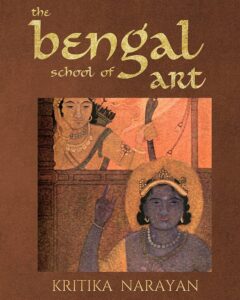
Bengal School of Art was the movement that arose directly or indirectly due to the Bengal Renaissance, which was a reform movement changing the cultural, social, and intellectual landscape of Bengal. Such an art school came into being in the backdrop of the anti-colonial struggle against British imperialism. It aimed to revive and preserve the Indian roots of artistic traditions. The movement was an answer to the growing popularity of western schools of art and the founders of the Bengal school aimed to spread Indian artistic schools again amongst the people.
A form of protest: What caused the emergence?
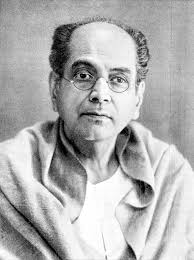
The Bengal school of art traces its origins in the beginning of 20th century. This indigenous art school was founded primarily by figures such as Abanindranath Tagore and Nandalal Bose who was a disciple and student of Abanindranath Tagore. In starting this school of art, Abanindranath Tagore is the golden link. Although the school emerged in undivided Bengal but it’s influence grew stronger after the partition in 1905 which subsequently gave rise to the Swadeshi movement in Bengal and this Bengal School of Art developed heavily during this period. What happened during swadeshi movement in Bengal was that people were rejecting foreign goods, foreign ideas and most importantly in this case foreign art too. People were rejecting western painting or more precisely paintings patronised by the company administration and officials. This turned more people towards the Bengal school of art and people started taking interest in it and started learning it too.
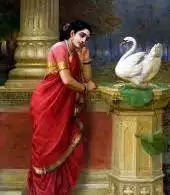
The Bengal school of Art was not just a response against the company artworks but also against the works and paintings created by Raja Ravi Verma which presented Hindu gods and goddesses and western styles and influence of art. These painting were mass produced and this notion was heavily criticised by Sister Nivedita and Ananda Coomaraswamy.

EB Havell, an art historian became the principal of Government College of Art and Craft presently situated in Kolkata, West Bengal.He also authored various books on Indian art and architecture Havell lectured to his institution’s professors during 1896-1905 advising them to teach decorative arts according to Indian crafts practices to their students… He also encouraged them to study and teach the elements and visual vocabulary of Mughal miniature paintings which symbolised Indian spiritualism instead of Western industrialism and materialism. Though, this approach was later criticised by many but Havell was successful in laying the initial foundations of Bengal school of art.
Motifs, techniques and Impact
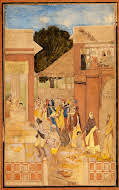
Miniature of Mughals, Rajasthanis and Paharis (present Jammu and Kashmir, Himachal Pradesh and Punjab) were a strong influence on the Bengal School, as well as folk visual culture. Techniques such as tempera and and notions of religious mythology also had a role in it. This school didn’t use any oil painting techniques which were prevalent in the West instead they used water colours and various Japanese washing techniques. Sombre colour palette is one of the definitive features in the paintings of this school. There are a few features and depictions which signifies that a particular painting belongs to Bengal school of art. First is the depiction of nature. The artists painted and depicted life in countryside of Bengal. They depicted the people’s day to day activities and beautiful natural landscapes. Secondly, the Indian epics like Ramayana and Mahabharata and Mughal folklore are significant references.
The Western school of art often focused on depicting luxurious life and people and a grandeur image of the world. But through folklores and mythology and the Bengal School of art remained grounded in it’s style and approach. Another distinguishing factor was the focus on inner beauty and emotions which the westerners lacked. They focused more on the grammar of the art rather than its feels but the Bengal school did the opposite by giving less importance to the grammar and more importance to the message which the painter wanted to convey through his/her painting.
The Bengal School of Art was one of the most significant revivalist movements in the history of Indian art. It played a crucial role in the India’s fight against the Britishers and imbibed a sense of national identity and pride. This art movement made a deep impact on the next generation of artists who belonged to this school. Establishment of institutions like Kala Bhavan in Viswa Bharati University in Santiniketan also were the result of the rise of Bengal school. This institution is a centre of excellency in the field of arts and crafts. This school of art overcame differences between Indian artistic traditions and the Modernist schools and movements of art and introduced various new techniques and ideologies to pursue art.
Some famous artists and their artworks
Bengal School of Art has given a large number of famous and talented artists who contributed hugely to this school while innovating in the technicalities and depictions in their own ways. We shall look at some of the important and well known artists and their artworks.
1. Abanindranath Tagore – Credited with the foundation of this very school of art, Tagore’s artistic brilliance emerged at a crucial and important time in history i.e. the Swadeshi movement.He rejected Western ideas about art – and sought to promote Indian indigenous art, thus heralding the birth of the Bengal School of Art. Some of his famous works include ‘Bharat Mata’, ‘The passing of Shah Jahan’, ‘Ganesh Janani’, ‘My Mother’ and many more.
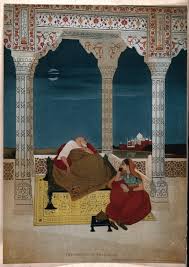
2. Nandalal Bose – A pupil of Abanindranath Tagore, Nandalal Bose through his paintings gave a visual image to the rising nature of Indian national movement as well as the post independent India. Bose was among the earliest of artists who introduced the technique of linocut in paintings. He demonstrated the cultural sphere of nationalism which prevailed in Bengal through his paintings.. His famous artworks are ‘Floating a Canoe’, ‘Dolan Champa’, ‘Siva and Sati’ and ‘Rati with her bow’ etc.
3. Jamini Roy – When discussing 20th-century art, one would definitely come across the name Jamini Roy. He created a unique style of art which was rooted heavily in folk traditions of Bengal. His style was more linear, colourful and decorative in nature. Roy rejected the European ideas and styles of realism and formalism. Roy presented stories from Ramayana and Mahabharata in his paintings. Apart from that he also painted the figure of Jesus Christ as well as Mahatma Gandhi and Rabindranath Tagore. Some of his famous paintings include ‘Three Pujarins’, ‘Gopini’, ‘Santhal Girl’ and ‘Queen on Tiger’.
4. Asit Kumar Haldar – Asit Kumar Haldar was Rabindranath Tagore’s grand nephew and that is why from a very early age very well aware about the school of art which indeed was founded by eminent personalities of his own household. Haldar along with Nandalal Bose studied the Ajanta cave paintings under the commission of India Society of London and gained important insights from it. The influence of the study of the cave paintings, murals and frescoes is reflected in his paintings too. Apart from this Haldar also depicted Hindu and Buddhist themes in his paintings.
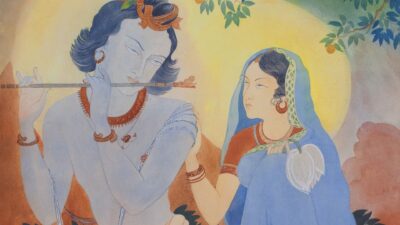
5. Ramkinkar Baij – Ramkinkar Baij is known as the ‘Father of Modern Indian Sculpture’. Baij depicted varieties of insightful sculptors belonging to the Bengal School. A visiting French sculptor introduced Baij to modelling and that led Baij to work and interact with clay in a unique manner. Baij’s work deeply reflected his love for nothing but life, his artworks shown his deep love for life. His best works are ‘Santhal Family’ and ‘Mill Call’.
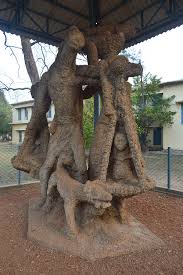
Present Conditions
The founders of the school like Abanindranath Tagore and his students, disciples struggled and worked really hard to establish a school of art whose basis was Indian indigenous artforms, folklores, history and mythology. They focused on subjectivism and more on the content part of the art rather than the technicalities of it. But the present artists of this school which are the second and third generations are not up to the mark of their predecessors. Most of the present artists just copied the artworks previously made by their predecessors by using different colour combinations. Even if some of them did paint something new, it was not an original work but just taking different pieces from older paintings and just compiling them. The new generation artists do not have the same level of intellectual skills or the vision which the founders had. Although there are no direct mentions about any artist or artwork but many contemporary films and music videos particularly those involving the Tagore family have visually tried to depict the paintings and artworks of the artists of this school. One direct mention of Jamini Roy though can be found in a song ‘Coffee Houser Sei Addata Aaj Aar Nei’ sung by the famous Bengali singer Manna Dey and composed by Suparna Kanti Ghosh.
But there are institutions which try to promote and conserve what the Bengal school established. The National Gallery of Modern Art, New Delhi and the Victoria Memorial in Kolkata, West Bengal on a regular basis organise exhibitions to honour the painters of this school like Abanindranath Tagore, Nandalal Bose and Gaganendranath Tagore. Ministry of Culture also does a lot to preserve and educate people about this indigenous school of art.
Conclusion
The Bengal School of Art arose as a powerful cultural reaction to British colonial rule, especially in the incendiary protests against the Partition of Bengal in 1905. It was more than an artistic movement; it was a fight of emotion and intellect. Abanindranath Tagore was at the forefront of this revival, looking toward the Mughal and Pahari miniature traditions but transforming them into something Indian, spiritual, and modern.
Furthermore, the early initiators of the Bengal School were not mere painters; they were culture lay-articulate. Their paintings, imbued with meanings, feelings, and a sense of identity, echo even today. Their dedication, aesthetic sensibility, originality, and involvement helped set a movement that gave an Indian voice to art, distinct from Western academic realism. However, somehow this spirit has waned in modern times. Many of the newer crop of artists may be equally gifted but often lack the intellectual engagement and creative audacity of their early masters. The Bengal School was never just about style and technique; it represented a greater philosophy: a quiet yet forceful pride in one’s roots.
For this school to remain relevant and meaningfully grow, newer generations must reconvene at the founding ideals of the Bengal School. They ought to study not only the style but the intention, cultural context, and thinking behind the original works. It is only after this that the tradition can be reread in a manner that speaks in its own tongue yet looks fresh in the interface of today’s world.
Revival is not about imitation, but rather lecturing it forward with its own eyes, its own heart, and its sincere understanding of what the movement implied.
Bibliography
1.Masters of the Bengal School of Art – Celebrating Indias Artistic Renaissance
2.THE BENGAL SCHOOL OF ART: A JOURNEY THROUGH ITS ARTISTS AND LEGACY
3.https://mapacademy.io/article/bengal-school/
4.The Bengal School of Painting, To-day
5.https://mapacademy.io/article/abanindranath-tagore/
6.https://mapacademy.io/article/nandalal-bose/
8.Asit Kumar Haldar – DAG World
9. Ramkinkar Baij – Indian Sculptor who defied artistic norms of Santiniketan




